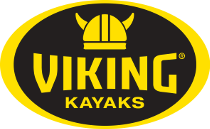"Good Vibrations" Tuna Lure choices explained
6:06PM 16th Jan 14
Greater numbers of kayak anglers are discovering our fantastic light tackle tuna fishery. Taranaki in particular is seeing the result, with more kayaks than ever out trolling feathers, balsa wood, and plastic targeting skipjack and albacore tuna. The skippies can be harder to find but their “never say die” attitude makes all the uncounted paddle strokes worthwhile. The real gems though are the albies; at times they’re prolific, but always give an excellent account of themselves on light gear. As a bonus they’re awesome table fish when properly handled.
In a previous article title "How to catch Tuna from a Kayak" I concentrated more on the rods, reels, and lines I use when paddling for tuna (you can read that article HERE ) ; this article I take a closer look at the lures, their hardware, and the ways to attach them to the end of the line. A key point to note is paying attention to what your rod is telling you about the lures action and the speed you’re paddling at. As with last month’s discussion, each of these factors is interlinked and success is often about the package deal rather than a single component.
Where to start, a manic choice of lures for targeting some of the greatest light tackle sport fish available to us. The different lure styles have their advantages but the bibbed hard bodies have become the top performers for many kayak anglers
Feathers and flies
For many years my “go to” lures for targeting Northland skippies were trolling feathers and salt water flies. It was a rare occasion over summer months when at least one Williamson feather or Pat Swift salt water fly wasn’t glinting in my wake. The technique was to slide either or both back behind the kayak and paddle as fast as you could for as long as you could and hope a tuna snaffled one before your arms fell off!
The smart angler looked for bird activity, then paddled steadily up wind to get above the schools while trying to conserve energy. Once the fish and birds were nicely downwind it was much easier to turn and race with the wind and chop assisting you along. As you flailed away with the paddle the anticipation would build while waiting for the slamming strike-and-run of another tuna.
What a way to start the day, a nice Cape Egmont albacore destined for the ice. Great fun on light gear these speedsters have the bonus of being great on the BBQ
Unfortunately it was rarely as simple as that. As much as you tried to get up wind the fish seemed to sneak further ahead. At other times you’d turn and begin the speedy downwind run only to have the school vanish and leave you out of position again. On the whole, specifically targeting tuna with feathers was a lot of hard work, and most captures tended to be random encounters.
This is the one area where trolling feathers and salt water flies can excel; with very little water resistance they’re no effort to have trolling along behind the kayak. This allows you to almost “set and forget” making them a great option to leave out just in case a random tuna happens by. Yes, they perform best at speed, but it’s almost inevitably they’ll get eaten at some stage. I caught a lot of skippies this way.
Bibless hard bodies don’t have the swimming action of their bibbed cousins but are beginning to show promise for those kayakers with places to go look for a lower drag option. They swim lower in the water and are a better option than feathers and files when conditions are choppier
Bibbed hard bodies
Over the last few years I’ve increasingly added selections of hard body lures to my kayak fishing arsenal. Since I’d been using them for other fish species it was a natural extension to try trolling bibbed lures for skippies and albacore. This has turned out to be a real learning exercise and bibbed lures have changed my whole approach to catching tuna. For several years now I’ve been going out and specifically targeting them rather than simply paddling and hoping for one as a by-catch when trolling feathers between fishing spots.
The single biggest difference is the bibbed lure’s ability to entice tuna at slower trolling speeds. In fact this was the biggest learning curve I had to go through when running them. Previous experience told me I had to paddle flat out to attract the attentions of marauding skippies and albacore. It was a real light bulb moment when I suddenly realized with some lures I was getting more strikes going up-wind or when tired after lots of paddling. In other words, I was slowing down and catching more fish!
This is the greatest hint I can pass on for those looking to troll bibbed lures from their kayak: pay attention to your rod tip. The way the tip vibrates or shimmies is the best indicator of how your lure is swimming. If you’re moving too slow for a particular lure there will be little or no movement in the rod tip. As you paddle faster the vibrations will increase until you hit the sweet spot where the lure is swimming at its best. Increasing speed after this point won’t give any more action (rod vibrations), and in many cases will see a reduction. At this point slow down to get back into the lures trolling speed sweet spot.
Some lures will continue to improve their action until you can’t paddle any faster. These are generally salt water designs aimed at the boating market, and are a great option if you’re travelling a long downwind leg and you’re in a hurry. They won’t be overpowered by the conditions in the way the slower speed trolling lures can be, and much like the feathers and flies can be set and forgotten about – at least until the fish strikes!
As I’ve mentioned in the past, many of my most successful trolling lures are those aimed at the fresh water market. Typically these are designed for slower trolling speeds and their sweet spot is within most kayak anglers comfortable paddling pace. Many manufactures publish the speeds lures are designed to operate best at, check the packaging or do a little on-line research before buying. For albies I like lures with a sweet spot at around 2.5 – 3.5 knots, for skippies around 4 knots.
Surface active lures are a new category being looked at for targeting skippies and albies. These lures operate at slower trolling speeds and have the potential to be effective as they short-cut across schools when circling balled bait. Time will tell if they live up to expectation.
Bibless and surface active lures
Trolling bibless hard body lures and small poppers is an area I’m currently experimenting with. The bibless lures don’t have the swimming action of their bibbed counterparts, but are much easier to drag through the water. I’m looking at them as an option for those days I have long distances to cover and don’t want the drag created by a bibbed lure. When trolled from a 7’ soft bait rod the gentle side-to-side motion of the rod tip as the kayak rolls with each paddle stoke gives enough action to the lure to make it interesting. I’ll give an update once I’ve done more testing.
Trolling small pencil poppers and surface active lures is totally at the other end of the spectrum; paddle slower or these lures will fly off the water and smack you in the middle of the back! Again this is very much an experiment. The idea is to create surface movement and action when trolling around tuna boiling on balled up bait. When circling the school lure speeds fall dramatically as they short-cut the turn stopping many bibbed lures from being effective. The splash and movement of a surface active lure as it shortcuts across the top of the bait will hopefully make it attractive in the melee of feeding tuna. Once I have more results I’ll report on the successes or failures.
The two preferred ways of attaching lures. Using a Genie clip through a split ring on the lure provides almost frictionless articulation and rapid lure changes. The looped trace connection does away with extra hardware but keep an eye on wear and abrasion.
Attaching lures
The way hard bodies are attached to the end of the line is an area needing a little attention. Many suited to trolling for tuna are small (especially compared to the CD series Rapalas most Kiwis think of when bibbed lures are mentioned). Some of my most successful tuna lures are less than 80mm long, others less than 50mm. There’s a real risk of stifling the action of lures this small unless they’re given the freedom to move.
My preferred means of attachment is to add a split ring to the towing eye of the lure (some already have them fitted) and use a Genie clip tied to the end of my 20lb fluorocarbon leader. It’s fast and easy to slide the split ring on and off the Genie clip when swapping lures, but more importantly this system provides almost frictionless articulation to allow the lure to swim at its best.
The split ring has two additional purposes: firstly it can be very difficult to get a Genie clip through towing eyes mounted on the bibs of some lures, secondly it rotates the Genie clip 90 degrees so it’s vertical down the centerline of the lure. This is important because it evens up the water flow over the lures bib and lessens the impact it can have on swimming action.
As for the clips, I use the genuine “Genie” brand as I’ve had some of the clones let me down. That said this style of clip is perfect for the job as it doesn’t rely on locking a gate to keep it closed. This means there’s little chance of it springing open if it ends up in a tuna’s mouth and the fish chomps away on it.
For those anglers who don’t like using clips I’ve had great success by upping the leader weight slightly (25 – 30lb fluorocarbon) and using a good loop knot tied directly to the eye on the lure (eliminate the split ring I use with the Genie clip system). Be aware that bibbed lures have a lot of movement/vibration when swimming properly so make sure you regularly check loops for wear and abrasion. When rigging this way I now routinely retie loop knots at the top and bottom of each hour to ensure there’s not a weak link in the chain.
Trebles remain the best performers when targeting skippies and albies. Light gauge hooks work best on smaller lures, heavier gauges offer greater strength, while the short-shank semi-circle design stays pinned better if you accidentally slack line a fish.
Treble hooks
A final note about the hooks I’m using on hard body lures when targeting skippies and albacore: I’m continually experimenting with singles, paired singles, and doubles, but I still find trebles the best. As I mentioned last month many of the smaller lures best suited to chasing tuna will need better hooks than those they’re rigged with, but unless you’ve plenty of experience stay with trebles. They’re easily the most successful at pinning these manic speedsters, and provided you stick with quality they’ll serve you well.
Written By Stephen Tapp for the NZ Fishing News magazine, read more of Stephens Fishing News articles HERE





